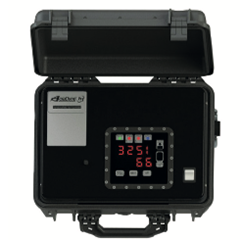PES had a very informative interview with Bobbi McConnell, Marketing Communications Manager at AIMCO Global. The effects of the electricity production tax credit on the US wind industry, critical fastening and bolting tools were just a few of the things we talked about.
PES: Welcome back to PES Wind magazine. Thanks for talking with us. For the benefit of our new readers would you like to begin by explaining a little about the background of AIMCO and the importance of the wind industry to you?
Bobbi McConnell: Our headquarters are in Portland, Oregon and we have over 40 years’ experience in various industries and wind energy one of the most important and have a wide range of product portfolios.
Our service, repair and calibration labs provide fast turnaround on repairs and also, all electronic torque equipment meets NIST standards.
PES: Currently are you experiencing more growth in the market?
BM: Based on industry reports, the forecast in the US marketplace expect growth upwards of 40% throughout the wind industry.
Offshore is expected to be a tremendous growth market in the US despite the challenges the US is experiencing in developing offshore wind farms. Among those, the coastal waters of the United States don’t share the same meteorological or oceanographic conditions as those in Europe’s North Sea. Although US coastal waters provide strong winds, the occurrence of hurricanes is a force to be reckoned along the East Coast and the Gulf of Mexico in the United States.
Currently, according to the U.S. Department of Energy, more than 25 offshore wind projects with a generating capacity of 24 gigawatts are now being planned, mainly off the U.S. Northeast and mid-Atlantic coasts.
PES: We know that data collection is important to AIMCO, please tell us why?
BM: To understand the importance of data collection, you must first understand the accuracy difference between Transducerized and Current Controlled tooling. You may remember I wrote about this in PES last year.
Current Controlled (Open Loop) tools are a dedicated system consisting of a tool, cable and controller. They are pre-calibrated in a lab using an external transducer on a rundown fixture. The tool is operated on the external transducer at set torque points. The amount of current supplied by the system is matched up to the torque reading of the external transducer. The lab will input these torque readings which the system translates into the amount of current it needs to supply to achieve the amount of torque required.
Unfortunately, current controlled tooling is an open loop design. Once the tool is removed from the external transducer there isn’t any true torque feed back into the system. The system simply supplies the per-set current and the operator has to accept the torque was properly applied.
However, a number of things effect the torque output but not the torque readings of the system. Things like temperature, gear wear, voltage and motor performance all effect the torque output, but the system is unable to adapt and compensate for these changes. It’s simply all guess work. It’s also a dedicated system, which means that something as simple as changing out the cable, voids the calibration.
Transducer Controlled (closed Loop) tools like the AcraDyne HT system from AIMCO have the transducer built into the tool itself at the output shaft. The transducer is constantly measuring the torque in real time and feeding that back into the system. Variations of temperature, gear ware, voltage and motor performance do not affect the accuracy of the transducerized system because they all happen before the transducer. The system will simply keep applying power until the transducer reads the requested toque before shutting off.
The AcraDyne HT system also records date, time and rundown information of up to 32 different preset torque jobs stored in the controller. All the recorded torque data is easily exported to Excel with the touch of a finger. Modular design- unlike current controlled systems that are a dedicated system. The calibration of a transducerized tool is in the tool itself not the system. Tools, cables and controllers are all interchangeable. When the annual calibration is due you only need to send in the tool not the whole system.
If your customer is relying on you for accurately applied torque. Take the
guess work out and use a closed loop transducerized system for
unparalleled accuracy.





























